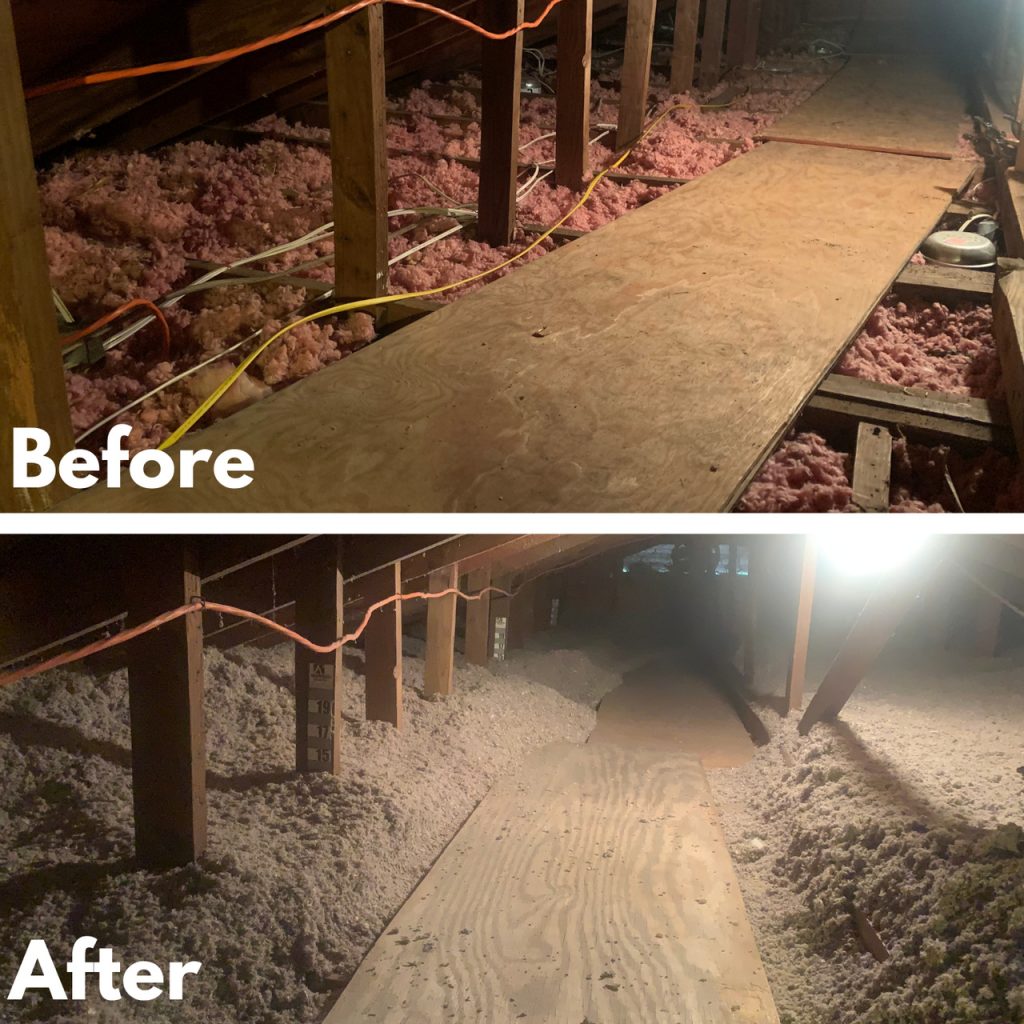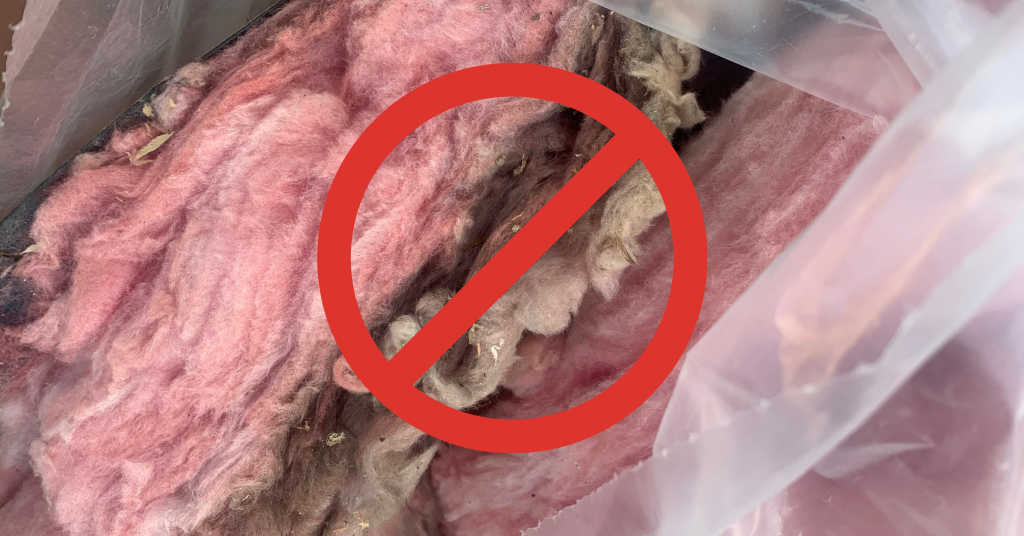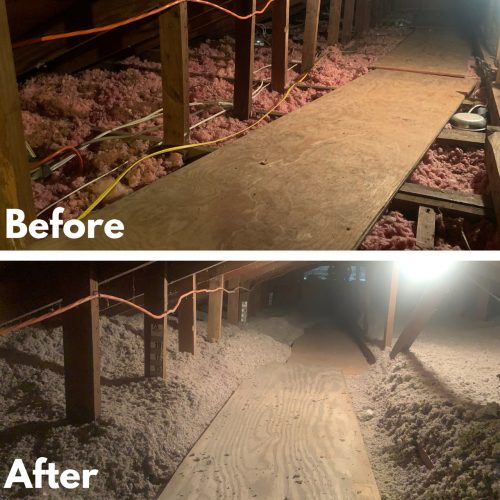Some days I stay completely indoors. And other days I spend a great deal of time outdoors. Some of those decisions are made for me by the weather.
In the winter time, with it’s really cold temperatures, I bundle up in a few layers and a “sock hat”. My family, who lives in the north country of MN, IN, OH and CO – where it really gets cold for longer periods of time – they know how to seriously layer-up for warmth!
And, I’m told that on bitterly cold days, they too decide to stay indoors!

Is Your Attic Insulation Reliable & Dependable?
But our attic insulation never gets a break. Attic insulation has to be ready, like a guard at the hallowed Tomb of the Unknown Soldier, to protect your home from whatever bitter-cold temperatures get thrown at your house.
Insulation Isn’t a Popularity Contest
Of attic insulation, which is the most popular? Well, how do you mean the question? Popular with who?
- Popular with builders because it’s cheapest and quick to install?
- Popular with house flippers because it quickly satisfies the code inspector?
- Popular with the DIY folks, because it’s easy to get at the box store?
- Popular with …??
You may not know that the largest shingle companies also make fiberglass insulation. These companies create incentives for builders to put their entire line of products in/on every house they build. Builders get exotic vacations and other kick-backs for being loyal to the “brand”. It’s often not a decision of what’s best for the home buyer.
For the last twenty years, in my Atlanta market, the type of attic insulation I most often see in attics of established homes, is loose-fill fiberglass insulation.
If the home is twenty years old or more – often there is a mix of attic insulation in the attic – because a previous homeowner wasn’t satisfied with the builder’s grade of fiberglass insulation and added a few inches more.

Is More Always Better?
When I’m in these attics, and I’ve been in many thousands of attics, I’m asking myself, “Why did they add more fiberglass insulation on top of the original fiberglass insulation?”
Afterall, if you’re cold and the builder’s grade of fiberglass insulation isn’t keeping your family warm, why add more of the same?
After all, we don’t follow that logic elsewhere in life, do we?
If TexMex food makes you sick, you don’t eat more of it.
If these tires give your car a rough ride, you don’t replace them with the same tires.
If wearing wool makes your skin itch, you don’t wear more of it.
If that brand of perfume or cologne gives you a headache, you don’t splash on more!
Unfortunately, people believe if they keep filling their attic with more and more loosefill fiberglass insulation, it will eventually protect them in the really cold temperatures, when they need it the most!
But, does science support that logic? It does not.
Fiberglass Attic Insulation: A Cruel Joke?
It’s a documented fact that loosefill fiberglass attic insulation loses R Value as the temperature drops. Look at this chart:
U.S. Department of Energy Test Results
| Loose Fill Fiberglass | ||
| Metering Chamber (F) | Climate Temperature (F) | R-Value |
| 70 | 44.6 | 17.8 |
| 70 | 32 | 16.1 |
| 70 | 26.8 | 14.1 |
| 70 | 8.6 | 12 |
| 70 | -4.0 | 10.6 |
| 70 | -18.4 | 9.2 |
| Loose Fill Cellulose (Settled) | ||
| Metering Chamber (F) | Climate Temperature (F) | R-Value |
| 70 | 40 | 18 |
| 70 | 20 | 18.8 |
| 70 | 8 | 19.4 |
| 70 | -5 | 19.6 |
| 70 | -18 | 20.3 |
The LEFT hand column replicates your home’s indoor temperature. The example is 70 degrees.
The MIDDLE column reflects the outdoor temperature. In our example, the temperature keeps dropping, colder and colder.
The RIGHT hand column reflects the actual R Value of the attic insulation.
Notice as the temperature keeps dropping, the fiberglass insulation loses R Value!
Let’s say you’re keeping your thermostat on 70 degrees. You wish to maintain a temperature of 70 degrees inside your home on a bitterly cold winter day or night.
According to the chart, when it drops to the single digits – your loose fill fiberglass insulation has LOST 33% of it’s R value!
When you need it the most, fiberglass insulation let’s you down.
On the other hand, as it gets colder and colder, loose fill cellulose insulation actually works harder to protect you!
In those same conditions (70 degrees inside your home, and temperatures in the single digits), your cellulose attic insulation will actually INCREASE it’s R value by 8%.
Alright, I know what you’re thinking.
“Bob, if it’s too good to be true, it probably isn’t!”
Let’s get this straight: As temperatures get colder, loose fill fiberglass attic insulation loses R Value, while cellulose attic insulation actually increases R Value!
When you most need your attic insulation to protect your home, cellulose insulation is the obvious choice.
When it’s bitterly cold and windy outside, I’m sure you have one particular coat or parka that you instinctively grab – because you know it will protect you.
That confidence is the same confidence that I feel every day, as I whole-heartedly recommend R-50 all-borate cellulose attic insulation to our homeowners. Because I know my cellulose insulation will protect

Let me be Blunt
If you’ve got loose fill fiberglass insulation in your attic, do yourself a BIG favor, and add a few inches of cellulose insulation over the top of the fiberglass. And get ready to be amazed.
Cellulose: Like Life-Saving Boots
In my younger years I was trained to cruise timber (hiked through forests for timber companies). I was an avid outdoorsman in every sense.
I’ll never forget the finest pair of hiking boots I owned. They were Herman Survivor boots.
Printed on the box, and prominently printed inside those insulated boots was this phrase, “Never Say Die” (We had it before James Bond did!)
Those insulated boots were designed to protect my feet from freezing. They guaranteed protection to -10 degrees. I wore those boots for almost 10 years! Don’t confuse my 1977 American made Herman boots with the imported stuff now sold at Walmart! It’s not the same company.
And that’s the difference I am trying to convey in this article, that separates loose fill cellulose attic insulation from loose fill fiberglass attic insulation. All attic insulation is NOT THE SAME.
Cellulose is definitely PROFESSIONAL GRADE, and as the mercury falls and you need your insulation to protect you the most, it won’t let you down.
Like that faithful soldier protecting the Tomb of the Unknown Soldier, your cellulose can be counted on as the mercury falls and fiberglass turns cowardly.
Putting cellulose insulation in your attic, is like fitting a beautiful pair of Herman Survivor insulated boots over your home! Only it won’t wear out in 10 years like my trusty pair of boots.
Do you need an idea of how much investment you need for a cellulose insulation upgrade in your attic? Don’t sit and wait for a contractor to call you back – Use my EZ Online Calculator and schedule your job online, instantly!
Thanks for reading.
Bob Bird
Bird Family Insulation





